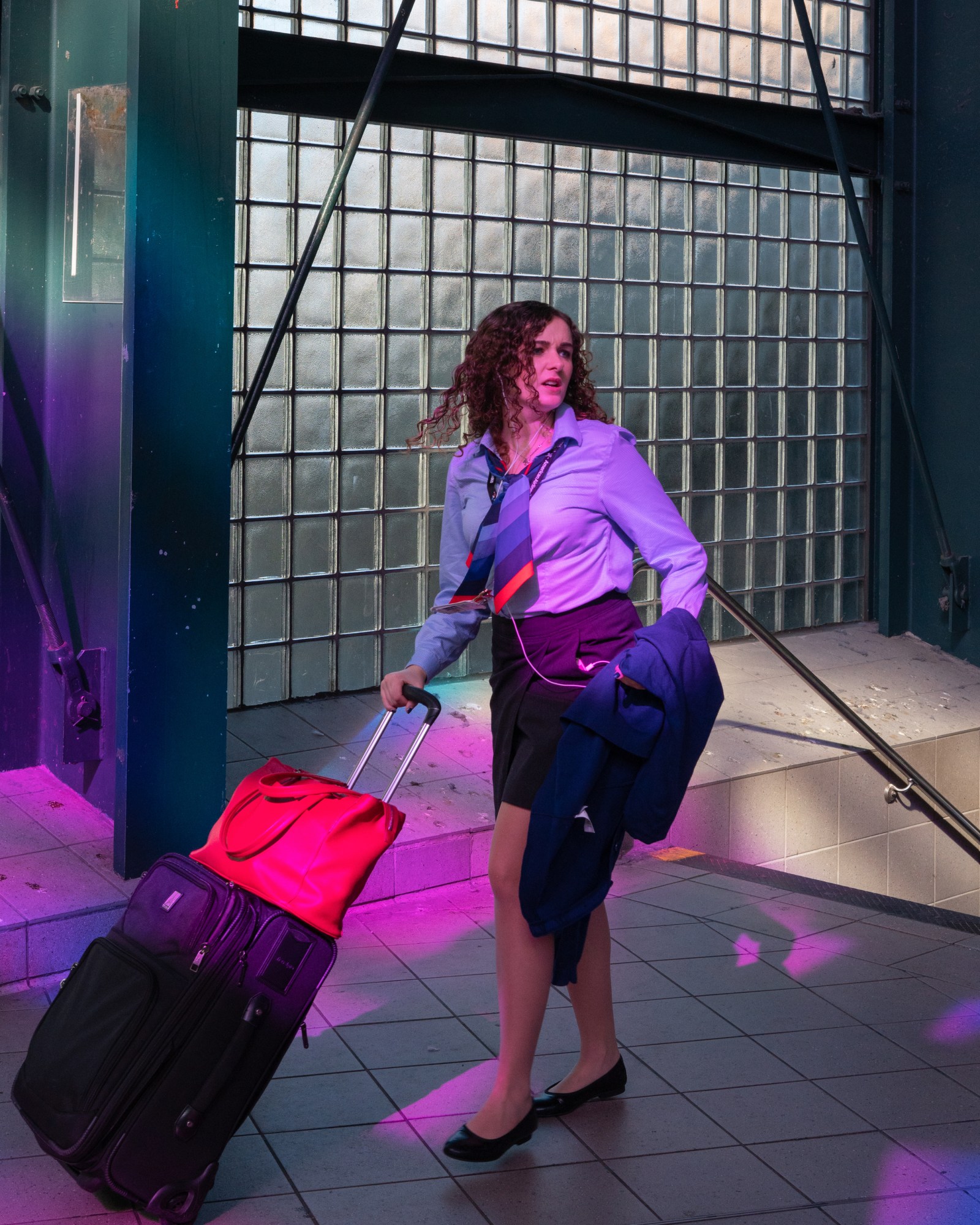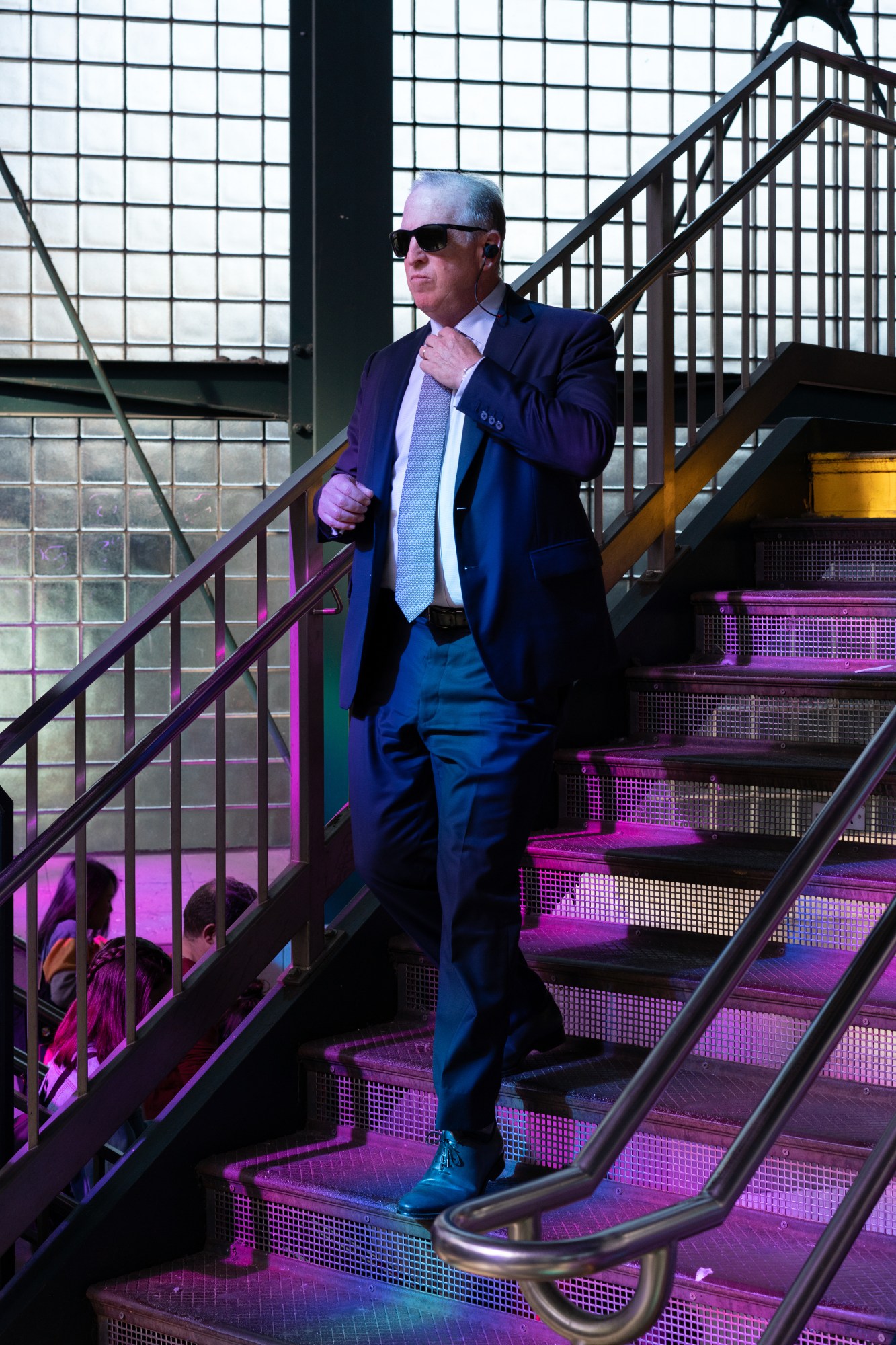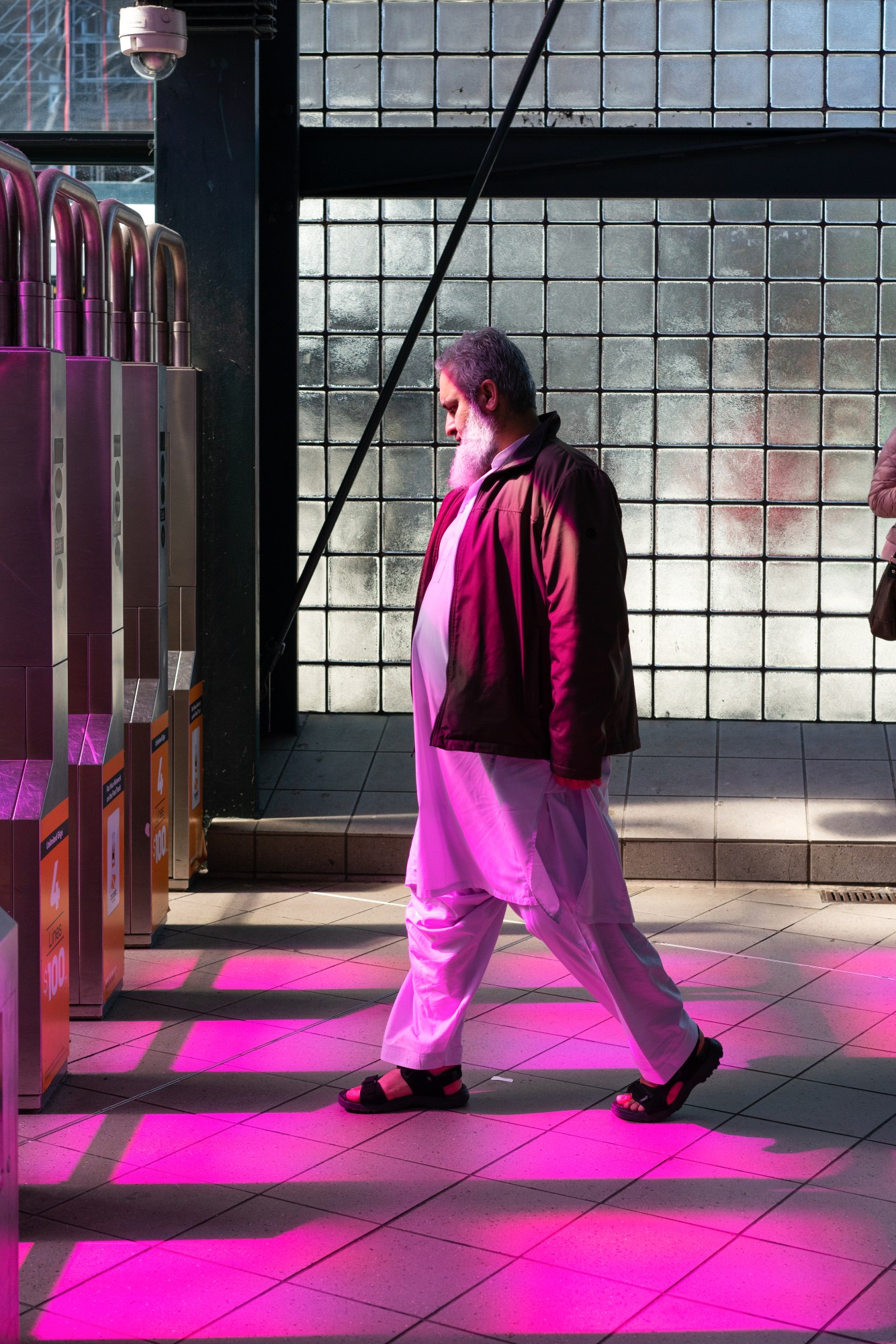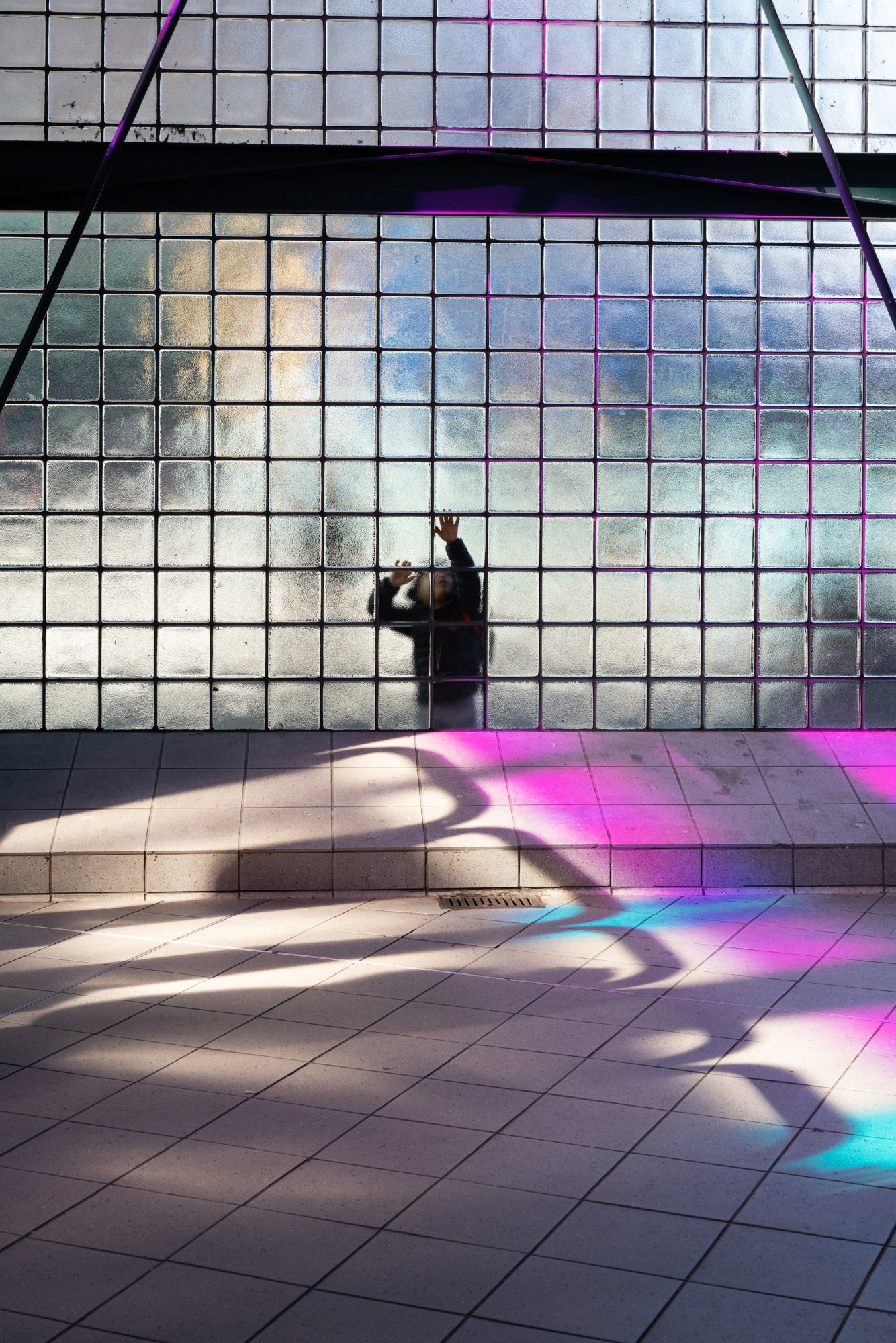For the past thirteen years, photographer David Rothenberg has begun his daily commute at the busy Jackson Heights–Roosevelt Avenue subway station. Located in Queens, New York, at the intersection of 74th Street, Broadway, and Roosevelt Avenue, the station looks like many others across the city, save for a large handmade glass work that sits above its eastern facade. Casting prismatic light over the hundreds of thousands of commuters that pass through it each day, the window, installed in 2004, elevates an otherwise unremarkable subway station into a celestial space of different colours at different moments of the day — particularly, David says, in the mornings.
Two years ago, the photographer broke from autopilot mode and began to capture his commute and fellow subway users dappled in the pinks and purples and blues of the glass work. Brought to a close by the start of the pandemic — and the end of commuting as we knew it — David’s book, Roosevelt Station, has inadvertently become a timestamp for the cusp of a breaking point in the way we work and travel.
Here, we discuss with the photographer how he came to look around to find inspiration staring right back at him.

Tell us a little bit about yourself, where you’re from and where you’re based, David.
I’m a photographer and photo educator. I’m originally from southern California, but I’ve been in New York for over 20 years. I live in Jackson Heights, Queens and I’ve made my home borough the subject of several recent projects.
How long have you been taking photographs?
My father taught me the basics of using a manual 35mm camera when I was 13 or 14 years old and I became quite committed to making photographs once I was able to access a darkroom during high school.

Do you remember the first images that had a profound effect on you?
My grandfather directed television commercials during the 1950s and 60s, and he made many of the iconic TV advertisements of the post-war period such as the Lucky Strike dancing cigarettes. I became obsessed with the images of that era, and it really guided my interest in becoming an artist.
My father worked as an urban planner and he would often keep these poster-sized aerial photographs around the house, of projects under construction in the California landscape. I was really struck by how abstract and strange the hills and topography would appear in these photographs and was fascinated by their disorienting sense of scale — the symmetrical branching roads of not-yet-built suburban communities looked to me like microscopic biological structures in the barren landscape.

What kind of stories are you drawn to telling in your work?
The places that I tend to photograph in Queens are some of the most culturally diverse communities in the United States. Despite this fact, these places have long been considered by many to be peripheral and are often overlooked. It’s important to me that my photographs convey a sense of place, yet I’m most interested in the ability of an image to speak about something other than what is literally depicted.
I am drawn toward photographing locations for long periods of time, returning over and over to the same streets and sites. In a way, this approach helps me to become more attuned to my surroundings and notice details that I might have missed otherwise. I’m often responding to moments where ordinary and mundane subjects reveal something extraordinary.

How did Roosevelt Station first begin?
I had travelled through the station on a daily basis [for years], but only began to photograph extensively about two years ago. Every morning, I would photograph in the station before heading to my teaching job in Manhattan. I was struck by the remarkable quality of light produced by the station’s windows during the morning hours.
What makes this station so special?
On bright mornings, the station is illuminated with cathedral-like light from an array of transom windows, by a glass artist named Tom Patti. I became fixated by the transformative quality of this colourful light and the way its dramatic hues could bring a sort of theatricality or cinematic quality to candid photographs of people passing through the space.

What was the process of making it like?
I mostly photographed during peak rush hour times; when the station would be incredibly busy with surges of activity, punctuated by quieter moments. When the station was illuminated by this theatre-like light, the space felt like a stage or film set. I would hear the arriving elevated 7 train rattling above and come to a whining halt, and seconds later a wave of passengers would rush down a flight of stairs and into the illuminated portion of the station where I would be waiting with my camera. The lulls between these surges of activity resembled the intermission of a performance; particularly so when a transit worker would quietly sweep the station floor, like a stagehand between scenes of a play.

New York is the city most synonymous with street photography – as a young photographer how do you carve out a space in that?
There are many incredible bodies of work still being made about New York, especially as photobooks. I am most drawn to projects made with tremendous specificity or when a photographer is looking at a subject in their own backyard.
If you could only save one image from this story, which would pick and why?
I would say the first image of my book, which shows a lanky, elderly man suspended mid step as he descends a flight of stairs into the station. There is something about that image that encapsulates the precariousness of life in New York and hardships faced by many — a feeling that is particularly palpable throughout the city’s subway system.
‘Roosevelt Station’ is published by Perimeter Editions 2021 and available to purchase here.



Credits
All images courtesy David Rothenberg
